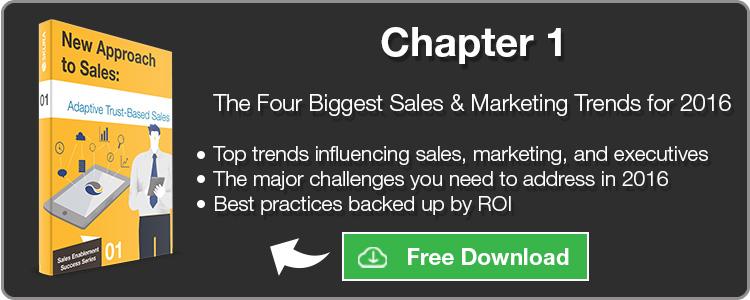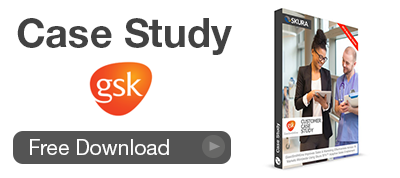The behaviour of healthcare professionals (HCP) is changing. Pharma sales reps (PSR) need to adjust the way they engage, and the communications they choose, in order to add value and develop trust with HCPs.
Today’s article explores two concerning trends impacting HCP interactions with PSRs – declining trust, and slow regulatory evolution.
Trends Impacting Health Care Providers
This article concludes the mini-series about HCP trends. CLICK HERE to learn about the declining accessibility of HCPs across every field of healthcare.
Physicians Don’t Trust Pharma Sales Reps or the Industry
An effective sales process is built on trust. Earning trust is a primary objective for any sales rep.
Trust building for pharma sales and marketing has been a major challenge for over a decade now. One study from 2005 revealed that 78% of PSRs spend less than two minutes with an HCP, and many of these visits are referred to as a ‘30-second detail’ with a sample drop (Source: VirSci Corp., 2005).
Mistrust wastes valuable marketing investments,
Today, 75% of HCPs say they do not trust the information provided to them by pharma companies (Source: Deloitte, 2015). This leads to major administrative challenges, as pharma sales and marketing expenditure can account for as much as 27.5% of revenues (Source: Accenture, 2013).
The distrust of HCPs does more than damage sales effectiveness; it also hampers long-term value from pharma funded Continuing Medical Education (CME).

(Image Source: EPG Health Media, 2013)
28% of HCPs disagreed that industry funded CME can result in better quality information, meanwhile, almost 40% felt that it is less credible and may be biased.
Mistrust hampers future marketing potential,
Across many industries, inbound content marketing, and even account based marketing (ABM) are growing as a primary strategy for bringing in traffic and converting leads. This strategy enables buyers to act on their own time, and to learn about vendors while deciding whom to trust.
The decline of HCP accessibility makes inbound content marketing a valuable and cost-effective transition.
79% of HCPs acknowledge that they ‘usually’ or ‘always’ initiate their online searches with a professional or specialty website, compared with 53% who use a search engine. As for pharma industry websites – only 23% of HCPs indicated so (Source: EPG Healthmedia, 2013).
It’s interesting to note the similarity between those that distrust the pharma industry, and those that use pharma industry sites for online searches.
This trust-challenge means that pharma companies are missing a major opportunity to drive loyal repeat traffic from their target market. 57% of HCPs feel that ‘knowing which resources to trust’ is a barrier to sourcing medical information online (Source: EPG Healthmedia, 2013).
Pharma industry needs more customer centricity,
84% of HCPs felt that the industry was overly focused on promotional materials, and 55% of HCPs stated they ‘never’ or ‘rarely’ access this type of material (Source: PharmaPhorum, 2015).
The life science industry needs to be more focused on creating material that HCPs actually want to seek out and use. This means treating HCPs like personas across a decision making process, and having specific, tailored, and relevant content available when it’s needed for each stage.
Marketing automation with a tailored martech mix is essential for capturing those early interactions; meanwhile, pharma sales enablement and a complete sales stack are a must-have for PSR interactions and trust-building.
Regulations Create Lag for Preferred Engagement Formats
In 2013, approximately 14% of HCPs stated that they wished to communicate with pharma via social networks (Source: EPH Healthmedia, 2013).
In 2015, more than 50% indicated that they see the value and wish to participate in the future (Source: PharmaPhorum, 2015).
However, as of 2015, only 3% reported using social media for this kind of engagement (Source: Healthlink Dimensions, 2016).
Capgemini Consulting explains that the heavy regulation of the industry is causing some life science companies to wait for explicit guidance from their respective regulators before moving to social media (Source: Capgemini, 2012).

(Image Source: Capgemini, 2012)
Between the creation of the FDA Social Media Working Group in 2010, and the first ‘draft guidance’ for “Interactive Promotional Material” in 2014, several delays have stalled the regulatory process. In May of 2015 some progress was made to towards creating FDA regulations that address how pharma companies can engage through social channels. The current regulations leave many questions unanswered about compliance online (Source: Healthcare Engagement Strategy, 2015).
As for the industry, two major concerns (other than compliance) are keeping social engagement to a minimum:
- The risk of off-label discussions with potential patients, and
- The risk of adverse events from social communications.
Apply digital sales interactions to social media engagement,
The concerns of the pharma industry are valid. However, they should be focusing on the value that can be gained through using social media for PSR digital sales presentations. Rather than using it as a way to engage patients in a pubic domain, which can be adverse.
Seeking out an HCP on social media, and engaging them through a remote digital interaction session is no different than using pharma sales enablement for remote digital sales presentations.
With only 3% of HCPs using social media for sales presentations, there is an opportunity for several healthcare companies to engage and convert through this platform.
This is a part of the solution that we put in place for global pharma leader GSK.
A “complete refresh of the selling platform” and a “re-energized sales force” are just two of the many ways SKURA’s pharma sales enablement enhanced their engagement and effectiveness with HCPs. Download the case study below for more.
Are you struggling with HCP trust issues, or trying to engage through social media but worried about the compliance challenges? Request a demo and let our sales specialists show you just how easy the digital transformation can be.














